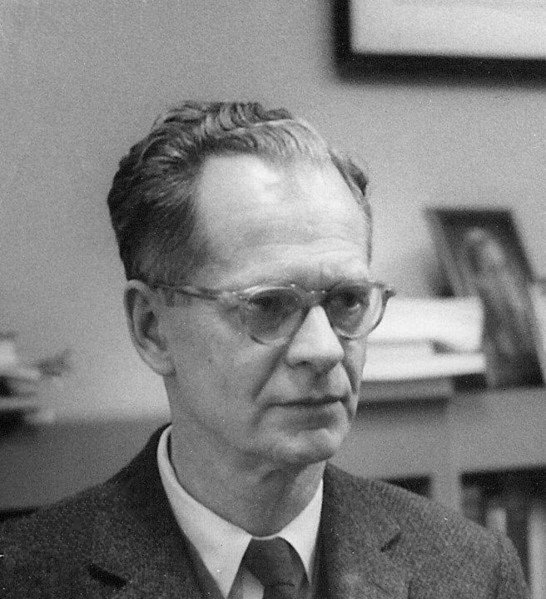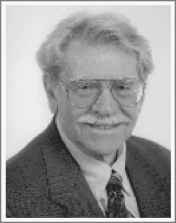Personality Course - Behaviorism part 2 - Skinner and Staats
BIOGRAPHY OF B. F. SKINNER

source
Burrhus Frederic Skinner was born in 1904 in Susquehanna, Pennsylvania. His younger brother died suddenly of an acute illness (probably a massive cerebral hemorrhage) while Fred Skinner, as he was generally called, was visiting home during his freshman year at college.
Childhood was happy for Skinner. He invented various devices, including a flotation contraption to separate ripe elderberries from green ones, a perpetual motion machine, and a device to remind himself to hang up his pajamas. He was also interested in writing and majored in English. After college graduation, he took a year off to write a novel. The project failed, and he turned to psychology in graduate school at Harvard, from which he received his doctorate in 1931. He extended his studies by postdoctoral fellowships, and married Yvonne Blue just before beginning his first teaching job at the University of Minnesota (1936–1945). They had two daughters and raised the younger in her early years in a modified crib he called an Air Crib, designed to provide an environmentally controlled environment (Skinner, 1945).
Besides his scientific writing, Skinner wrote a novel, Walden Two (Skinner, 1948), and kept a journal for many years (1958). After a brief period as chair of the Department of Psychology at Indiana University (1945–1948), he returned to Harvard, where he continued his research, theory building, and teaching until his death in 1990, at age 86.
Skinner was one of the most influential psychologists of the twentieth century, according to surveys of psychologists (e.g., Heyduk & Fenigstein, 1984). He received many professional awards, including an unprecedented honor, the Citation for Outstanding Lifetime Contribution to Psychology, awarded by the American Psychological Association just before his death (American Psychological Association, 1990).
Skinner dismissed personality as a discipline that had not become fully scientific but was still contaminated with prescientific philosophical assumptions. Skinner’s approach is called radical behaviorism to distinguish it from learning theories that include some internal causes of behavior, such as drives (per theorists Dollard and Miller) and cognitive variables (per Staats, Mischel and Bandura).
BIOGRAPHY OF ARTHUR STAATS

source
Arthur Staats was born in New York in 1924, the youngest among four children. His Jewish mother, whose maiden name was Jennie Yollis, came from Tetiev, Russia. Her grandfather was a Talmudic scholar, devoted only to study. Her father, after his own study, became an atheist and radical thinker. When Staats was 3 months old, his father, Frank, died suddenly, several days after the family arrived in Los Angeles after a voyage through the Panama Canal; his mother never remarried.
Through primary and secondary schools he scored very high on standardized tests but remained, by his account, a bored underachiever and a disappointment to his teachers. An otherwise-happy childhood was devoted mostly to omnivorous reading and athletic play. Raised in a family that was very poor, atheist in a Jewish ethnic tradition, vegetarian, and politically radical, Staats always felt different. He thought differently than his peers, he read different things, he questioned ideas that others accepted, and progressively he became a radical and original thinker, in ways that permeated every aspect of his life, including his various fields of study.
After serving in the navy in World War II, Staats became a serious college student. In graduate school at the University of California at Los Angeles (UCLA), his wide interests, combined with his drive for analysis in terms of basic principles, led him to complete the requirements for a PhD in clinical psychology while taking his degree in general-experimental psychology. With his objective view of human behavior, he found valuable elements in behaviorism’s science philosophy and conditioning principles.
In 1955 he became an instructor at Arizona State University (ASU), advancing to the rank of professor in 5 years. Beginning his own human behavioral program, within a few years he also succeeded in bringing in Jack Michael, Israel Goldiamond, and Arthur Bachrach to help begin the predominant center of the time for psychological behaviorism and radical behaviorism.
He had met his wife, Carolyn, at UCLA. When he went to ASU, she became his assistant, completed her dissertation on a study in his research program, and con- tributed to two chapters in his first book. When they had a daughter in 1960, he soon devised training procedures to study and produce her language-cognitive and sensory-motor development, using his psychological behaviorism principles. He states that his children—Jennifer Kelley, a child psychiatrist, and Peter, an associate professor in pain medicine at Johns Hopkins—were the first children raised systematically within behaviorism. In this and other “experimental-longitudinal” child research, Staats claims invention of the “time-out” procedure that today is a household word, as well as the token reinforcer (token economy) system that he used in training dyslexic children.
IN A NUTSHELL
- B. F. Skinner proposed a radical behavioral theory of individual behavior in terms of environmental determinants, without referring to unobservable internal characteristics such as traits.
- He described operant behavior as behavior selected by the environment. This provides a mechanism for adaptation in the life of an individual, parallel to evolutionary selection that occurs over generations.
- Skinner’s theory of operant conditioning describes the acquisition of behaviors through reinforcement and their elimination through extinction and punishment.
- Patterns of behavior can be understood in terms of chaining, discrimination and generalization, and schedules of reinforcement.
- Skinner’s model suggested treatment interventions through behavior modification.
- Critics have argued that Skinner’s model ignores important differences between humans and other species, especially language.
- Arthur Staats has presented a theory of psychological behaviorism that fills in many of the pieces missing in Skinner’s theory to make it more precise as a behavioral approach to personality.
- Staats proposes that personality consists of basic behavioral repertoires, learned behaviors that have broad effects on personality and are the basis of later learning.

Reference - Theories of Personality - Understanding Persons, Susan Cloninger, The Sage Colleges, 6th edition
This article is part of Personality Course series. If you miss previous articles, you can find them below.




We are SO proud to have you as a member of our
FANTABULOUS Power House Creatives family!
uvoted and/or resteemed!
❤ MWAH!!! ❤
#powerhousecreatives
Posted using Partiko Android